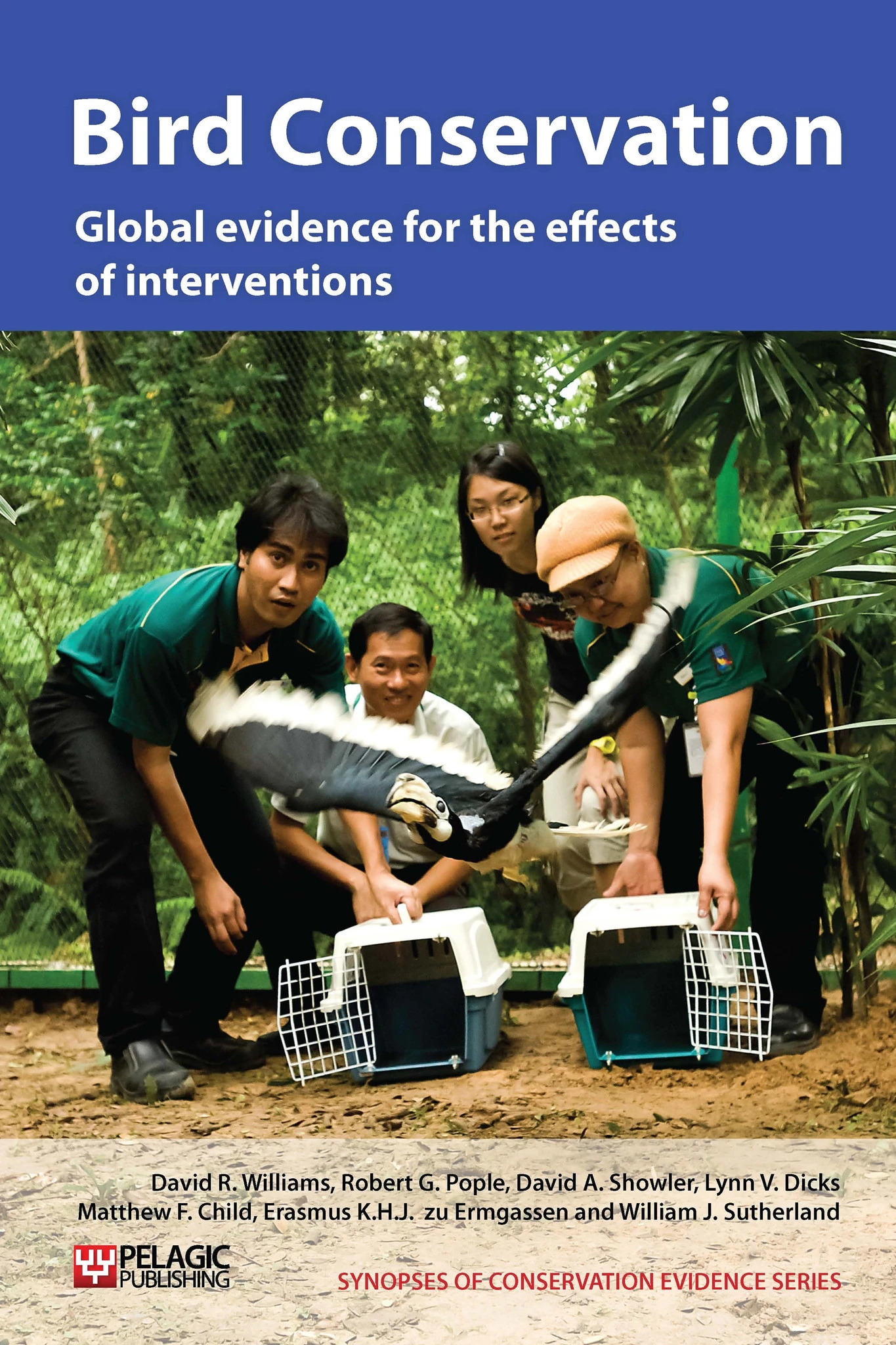Reduce management intensity on permanent grasslands for birds
-
Overall effectiveness category Likely to be beneficial
-
Number of studies: 7
View assessment score
Hide assessment score
How is the evidence assessed?
-
Effectiveness
65% -
Certainty
46% -
Harms
0%
Study locations
Supporting evidence from individual studies
A replicated controlled, paired site study in the Netherlands (Kleijn et al. 2001) found that the density of breeding bird territories was not significantly different between 20 fields with meadow bird agreements and 20 control fields, both for all bird species and just for waders. Oystercatcher Haematopus ostralegus, black-tailed godwit Limosa limosa, common redshank Tringa totanus and lapwing Vanellus vanellus were all significantly less abundant on management agreement fields than on control fields. There was no significant difference in the number of territories between field types for three of these species, but oystercatchers had significantly fewer territories on management agreement fields than on control fields (0.13 vs. 0.52). Paired fields were within 1 km of each other, similar in size and soil type. Fertiliser inputs were significantly lower and mowing dates later on fields with management agreements than on conventionally managed fields. Birds were surveyed five times between March and June.
Study and other actions testedFurther analysis of the same data used in Kleijn et al. 2001 (Kleijn et al. 2004), found that wading birds were less abundant on fields under meadow bird agreements (average of seven birds and 1.3 territories on agreement fields vs. 12 and 2.1 on conventional fields), whilst meadow songbirds were more abundant on meadow bird agreement fields, when analysed as a 12.5 ha scale (9.9 birds/plot on agreement fields vs. 7.7 on conventional fields). Duck and non-meadow bird breeding densities did not differ between management types at either the field, or 12.5 ha scale.
Study and other actions testedA 2006 replicated site comparison study of 42 fields in Switzerland (Kleijn et al. 2006) found that more birds, but not more bird breeding territories, were found in fields participating in the ecological compensation area scheme than in conventionally farmed fields. There was no difference in the numbers of bird species on each type of farmland. Ecological Compensation Areas are typically hay meadows farmed at low intensity: no fertilisers or pesticides (except for patch-wise control of problem weeds) are permitted, and vegetation must be cut and removed at least once a year - but not before 15 June (lowlands) or early July (mountains). The study surveyed seven pairs of fields (one within an Ecological Compensation Area, one conventionally farmed) and a 1-ha area surrounding each field, from each of three different parts of Switzerland four times during the breeding season.
Study and other actions testedA randomised, replicated, controlled trial on four farms in southwest England, in 2003-2006 (Defra 2007), found that 50 ´ 10 m plots of permanent pasture cut just once in May or July or not at all during the summer and left unfertilised attracted more insectivorous and seed-eating songbirds than control plots (fertilised plots cut in May and July, as in conventional silage management). The preference was shown by dunnocks Prunella modularis, winter wren Troglodytes troglodytes, European robin Erithacus rubecula, seed-eating finches and buntings, and was particularly strong for plots left uncut in summer. There were twelve replicates of each management type. This study is also discussed in ‘Reduce pesticide or herbicide use generally’, ‘Undersow spring cereals’, ‘Raise mowing height on grasslands’, ‘Reduce grazing intensity on permanent grasslands’ and ‘Plant wild bird seed or cover mixture’.
Study and other actions testedA replicated, controlled before-and-after study in 615 grassland fields in Jutland, Denmark (Kahlert et al. 2007), found that permanent grasslands fields under an agri-environment scheme designed to increase water levels had significantly higher numbers of three species of wader (northern lapwing Vanellus vanellus, black-tailed godwit Limosa limosa, common redshank Tringa totanus) in 2004-2005 after the scheme was implemented, compared to in 1999-2001, before the scheme. Eurasian oystercatchers Haematopus ostrolagus did not increase and effects varied between restored and permanent grasslands, and between wet and dry fields. The scheme involved promoting wet grasslands (see ‘Raise water levels in ditches or grassland’) as well as reducing fertiliser inputs, grazing pressure and the period of mowing.
Study and other actions testedA review of four experiments on the effects of agri-environment measures on livestock farms in the UK (Buckingham et al. 2010) found two replicated trials in southwest England showing that reduced management intensity on permanent grasslands benefits foraging birds. Both found higher numbers of invertebrates, seed heads and foraging birds at lower management intensity (less fertiliser, less cutting, less grazing or a combination of these). One study was the PEBIL project, also reported in Defra BD1444 (2007). The other was part of a Defra-funded project focussed largely on the effects of reduced grazing pressure (Defra report BD1454) for which no reference is given in the review. See ‘Reduce grazing intensity on permanent grasslands’ for more information.
Study and other actions testedA replicated site comparison study on farms in three English regions (Field et al. 2010) found that grassland managed under Higher or Entry Level Stewardship Schemes with low or very low inputs was not used significantly more by seed-eating farmland songbirds than improved grassland or open rough grassland. Between 0.5 and 2 birds/ha were recorded on average on the different types of grassland. The stewardship grassland category also included land being maintained as semi-natural grassland under the schemes. It is not clear how many sites of the different management types were used in the analysis. Surveys were done in the summers of 2008 and 2009 on 69 farms with Higher Level Stewardship in East Anglia, the West Midlands or the Cotswolds and on 31 farms across all three regions with no environmental stewardship.
Study and other actions tested
Where has this evidence come from?
List of journals searched by synopsis
All the journals searched for all synopses
This Action forms part of the Action Synopsis:
Bird Conservation
Bird Conservation - Published 2013
Bird Synopsis





)_2023.JPG)














